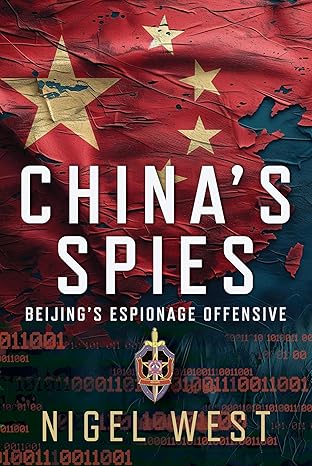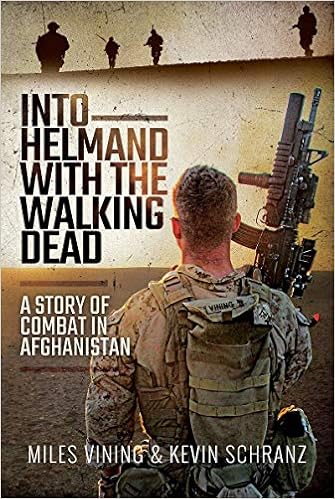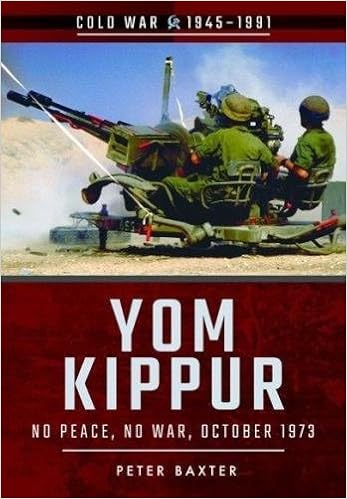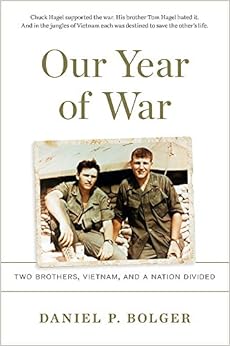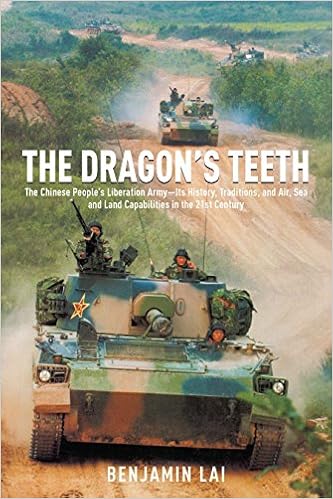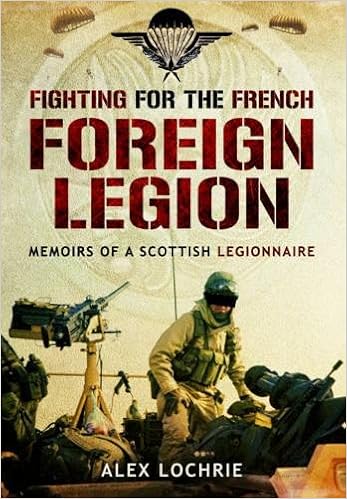The Battle of 73 Easting
By Sgt. Maj Clayton Dos Santos
During the Gulf War, more specifically Operation Desert Storm, one of the most important tank battles in history occurred. The Battle of 73 Easting was the encounter between the United States (U.S.) 2nd Armored Cavalry Regiment against the Tawakalna Division of the Iraqi Republican Guard (IRG). The Iraq armor troops were in a defensive position along the north-side grid line of the military map referred to as 73 Easting, which is from where the battle’s name is derived. The scope of the battle requires a context; therefore, it is worth analyzing the Operations Desert Shield and Desert Storm events in order to better comprehend the relevance of the Battle of 73 Easting at that moment. In other words, it is important to understand the scenario and the causes that led to the outbreak of the Gulf War in 1991.
Gulf War Overview
It is noteworthy that several notable events took place in July 1990, days, and weeks before the Iraqi invasion of Kuwait on August 2, 1990. Baghdad was looking for opportunities to put in practice a plan to vindicate old boundaries. The claim is that the annexation of Kuwait was legal because it was basically Iraq territory. With this in mind, on July 22, 1990, the Iraqi Army moved approximately 120,000 Soldiers to the border of Kuwait [1]. On July 25, 1990, some days before the Iraqi invasion, President Saddam Hussein received the U.S. Ambassador Ms. April Glaspie in Baghdad. The Iraqi government strategy was to demonstrate to the U.S. President George H.W. Bush that Iraq was not a threat to the U.S. interests in the Middle East. She attended the meeting to hear the Iraqi intentions to invade Kuwait [2]. Another meeting occurred, this time between Iraq and Kuwait. Nonetheless, they did not achieve any agreement. For this reason, Iraq decided to invade Kuwait [3]. On August 2, 1990, Iraq troops invaded Kuwait.
As a result, the Council of the Organization of Security United Nations (UN) approved Resolution 660, which strongly disapproved of Iraq's invasion and demanded the complete withdrawal of Iraq’s troops from Kuwait territory [4]. On November 29, 1990, the UN approved Resolution 678, which established the deadline of January 15, 1991, for Iraq to leave Kuwait. Furthermore, the resolution established the use of all means necessary to achieve the restoration of Kuwaiti sovereignty [5]. This way, the coalition forces, led by the U.S. forces, decided to launch the Operation Desert Shield.
Operation Desert Shield
The main goals of Operation Desert Shield were the protection of the Saudi Arabia territory and the coordination of the arrival of the main units and logistic support from the coalition [6]. Moreover, the Coalition knew that Iraq was close to the Saudi oil fields. Therefore, it was essential to increase the coalition forces in that country. During Operation Desert Storm, the coalition established a large support system along the main roads to provide a continuous supply of water, food, fuel, ammunition, and other essentials for the success of the operation [7]. During October 1990, President Bush decided to increase substantially the number of military personnel in Saudi Arabia, in order to defend it and attack Iraq [8]. As a result, Iraq decided to send another 100000 Soldiers to Kuwait. On January 15, 1991, the deadline given by the United Nations for Iraq to withdraw its troops arrived, but there was no movement of the Iraq forces. Operation Desert Shield was ready, with 34 countries participating, and the broad coalition had already positioned its forces. It was the moment to start the next step toward the conflict, Operation Desert Storm [9].
Operation Desert Storm
Operation Desert Storm took place between January 16 and February 24, 1991. The operation had four phases: 1) attacks against logistics infrastructure, and military communications systems and government electricity in Iraq; 2) attacks against the Iraq air force in Kuwait territory; 3) attacks targeting the Republican Guard Saddam Hussein, and the rest of enemy weapons; 4) conduct a ground invasion with a Coalition force to expel the invaders from Kuwait [10].
During the first phase, the coalition adopted a strategy used in the Second World War. It attacked Iraq’s infrastructure by a planned air strike, taking advantage of the coalition air superiority, which is known as “Instant Thunder”. The focus was the military communications systems and government electricity in Baghdad. The idea was to decrease the military capacity of Iraq by bombing their weapons industries, which include research centers for biological, chemical, and nuclear weapons. During the second phase, the coalition targeted the Iraq air force on Kuwait territory. Moreover, using its air force, the coalition attacked targets such as airports, ports, bridges, and roads in Iraqi and Kuwait territories [11]. During the third phase, the main targets were the IRG of Saddam Hussein and the rest of enemy weapons. The IRG units were the best prepared and the most loyal units to achieve Saddam Hussein’s desired end state. Until that phase, the coalition of countries had used only the air force to bomb Iraq and Kuwait. The Iraqi Air Force had approximately 700 aircraft, while the Coalition Air Force had 2790 aircraft in its arsenal. For the majority of the 30-day air campaign, the United States Air Force alone accomplished more than 1000 attacks daily and approximately 18000 attacks conducted by its navy [12]. The fourth and last phase of Operation Desert Storm was a ground invasion by the coalition forces against Iraqi forces. The Iraqi leader, Saddam Hussein, believed that maintaining fixed positions against the coalition forces would be a great strategy. The ground invasion by the coalition was a conventional offensive to confront the resistance from Iraqi troops, mainly along borders with Kuwait and Saudi Arabia. Faced with imminent defeat, Saddam Hussein decided to burn approximately 640 Kuwait wells in order to make the coalition forces’ mission more difficult to accomplish. On 24 February, the Coalition forces’ attack began with an invasion of Soldiers backed by tanks [13]. Leading one of the fronts was the United States VII Corps, with the objective of getting behind Iraqi forces, impeding Iraq retreat from Kuwait and prevailing against the IRG [14]. This last phase of the ground offensive culminated with the beginning of the Battle of 73 Easting.
The Battle
After the decision of the ground invasion, the coalition forces send the VII Corps for the mission of encountering and destroying the IRG. IRG was known as the best, the most aggressive and disciplined formation of Iraq forces [15]. The VII Corps traveled northward in a formation that the Corps Commander thought to be the best action considering the enemy’s situation [16]. The VII Corps had four divisions, the 1st Armored Division (AD), from the U.S. Army on the left and the 3rd AD (US) on the right. The 1st Infantry Division, Mechanized, (US) next to the 1st AD on the left and the 1st AD (U.K.) next to the 3rd AD on the right [17]. In the afternoon of February 26, 1991, VII Corps was moving with four armored/mechanized divisions, that in the center of this front was the 2nd Armored Cavalry Regiment (ACR), responsible for conducting reconnaissance for the corps [18]. Its mission was to localize the elements of the IRG divisions suspected to be in the area of operation and fix the enemy [19]. Furthermore, the 2nd ACR received the additional task of finding trafficable terrain for the VII Corps’ armored vehicles. The weather was unstable with sandstorms and intense winds. This caused issues, and at the beginning of the battle, the weather did not allow aviation support to the troop. The whole area of approximately 200 kilometers is a broad watershed with large areas of sand where the armored tanks can become immobile [20]. Under those circumstances, the coalition forces encountered the IRG in the 73 UTM coordinate grid lines, provided by the Global Position System (GPS). GPS is a satellite navigation system developed by the U.S Department of Defense, and its first use was during the Gulf War [21]. This way, this system was relevant to analyze the composition of the coalition forces and Iraq troops, and their positions during that battle.
Iraqi Forces
The Iraqi Republican Guard during that battle had in its umbrella the Tawakalna Republican Guard Division. The 18th Armored Brigade was one of the three brigades designated for the Tawakalna Republican Guard Division. Its mission was to protect the Tawakalna flank during its move. Thus, the 18th Armored Brigade’s plan was to move toward the Iraqi Army's training areas near 73 Easting [22]. The 18th Armored Brigade had the T-72 tanks, which were the front-line export version of modern Soviet tank technology. Iraq’s T-72 main battle tanks had a 125mm main gun able to engage targets up to 2,000m. In addition, the IRG had Boyevaya Mashina Pekhoty (BMP) infantry-fighting vehicles from the Soviet Union; Armored Personnel Carriers (APC); SA- 13 Air Defense Missiles; 152mm Towed Artillery; and Assured Crew Return Vehicle (ACRV) for Command [23]. They also had the engineering vehicle BAT-M Earth Mover; Utility Trucks; T-55 Tanks; BTR-70; MTLB Command Vehicles; ZSU-23-4 Air Defense Guns; 81mm dismounted mortars; Ambulance; POL Trucks; and Cargo Trucks. It is important to remember that none of the Iraq tanks, BMPs, or APCs had night vision equipment [24]. On the other hand, the coalition forces also had a strong firepower, and advanced technological equipment that overcame the Iraq forces.
Coalition Forces
The Coalition Forces had an extreme advantage in equipment and the Soldiers’ preparation for the Battle of 73 Easting. The main U.S. unit in that battle was the 2nd Armored Cavalry Regiment (2nd ACR), which comprised more than four thousand Soldiers and 350 tracked armored fighting vehicles, including tanks and scouts [25]. The 2nd ACR had three ground squadrons: 1st squadron (Ghost Troop); 2nd squadron (Eagle Troop); and 3rd squadron (Iron Troop). They also had the support of an aviation attack squadron and an aviation support squadron. In addition, each ground squadron had three cavalry troops, headquarters troops, a tank company, and a self-propelled howitzer battery. Moreover, each cavalry troop had 120 Soldiers, 9 M1A1 Abrams battle tanks, and 12 M3 Bradley fighting vehicles. The Regiment’s mission included repelling or destroying the Iraqi's forces and denying the enemy commander information of friendly forces [26]. It is important to remember that all U.S. vehicles had optical sensors, as well as tanks equipped with thermal sights, which gave a huge advantage to the coalition to find the enemy. Importantly, the coalition forces had the Global Positioning System (GPS). The GPS was then a modern device that used satellite signals to identify a specific position or target. At that time, the GPS was a crucial tool that enabled the troops to drive through the desert [27]. Thus, it is possible to realize that the coalition forces presented a far superior array of equipment and weapons when compared with the Iraq forces.
The Battle’s Outcome
The result of the battle demonstrated the vast advantage of the coalition forces. The intensity of the air support superiority and the technological equipment gave superiority to the 2nd ACR throughout the battle. Due to the intense use of air attacks by the coalition forces throughout the first three phases of the Gulf War, the IRG was not able to maneuver and achieve a position of relative advantage. Because of the air support provided in the first phase of the operation desert storm, IRG built bunkers to house the armored vehicle positions [28]. However, in the region where the 2nd ACR was maneuvering, weather hampered the Coalition’s air support. Seemingly, the Iraqi forces did not believe that the coalition could come from the west because of the severe weather [29]. Using thermal sights and GPS, the 2nd ACR used the element of surprise to defeat the enemy. Technology helped the coalition forces drive its vehicles through the desert and localize the enemy with precision. Consequently, independently of the weather conditions and the terrain, the 2nd ACR had the advantage not only because of use of technological equipment, but also because of the Soldiers’ confidence and competence. According to Knighton (2016), “73 Easting was a huge tank battle, in which the Coalition forces destroyed 160 tanks, 180 personnel carriers, and 12 artillery pieces. Two brigades of the Republican Guard were destroyed, and it was the Guard’s first ground defeat”. [30]
Main Points
The superiority of the coalition forces in the Battle of 73 Easting was remarkable. The coalition forces demonstrated better Soldiers’ preparation, mainly in leadership positions. Moreover, the equipment and technology were decisive points throughout the battle. These factors had a direct influence on the result and highlighted the advantage of the coalition forces.
Soldiers’ Preparation
The Soldiers’ preparation for the Battle of 73 Easting was a crucial aspect to the favorable result of the coalition forces. Leaders understood Soldiers had been trained relentlessly to attack, and for that they had to trust in themselves, their weapons, their leaders, and their fellows [31]. The confidence, agility, and aggressiveness of the Soldiers were fundamental to exploit and pursue the enemy. Furthermore, communication and feedback provided commanders the ability to share understanding, articulate their situation to higher echelons while making tactical decisions on the battlefield [32].
“In war, the quality of leadership does not just matter, it’s fundamental. Like the United States itself, the U.S. Army is a living thing, built of flesh and blood, not just iron and steel. Courage and competence are its driving force”. [33]
McMaster (2005) said that one of the most critical factors during the battle of 73 Easting was “offensive spirit derived from genuine confidence based in tough realistic training, bonds of mutual respect and trust, and faith in Leaders at all levels”. [34]
Hence, it is possible to identify how important the Soldiers’ preparation was for the Battle of 73 Easting. Nevertheless, at that specific battle, agile and adaptive Soldiers also had available high technological equipment to overcome Iraq forces.
Technological Equipment
Technology may have a significant impact in the dynamics of a battle. During the battle of 73 Easting, the coalition forces possessed some equipment that brought a distinctive advantage over the enemy. The coalition tanks had a thermal images system. With this technology, it was possible to identify the heat signature of potential targets. Therefore, even with the harsh weather conditions it was possible to identify and prepare for action in advance. Moreover, the coalition forces also had the optical vision system that provided the ability to detect the enemy in poor visibility conditions or at night. The optical vision system provided a significant advantage for the coalition forces when they deployed into the desert. Indeed, the most important equipment in connection with high technology at that time was the GPS. The GPS made it possible for coalition forces to navigate without reference in tough terrain. The GPS technology at that time provided a grid of Universal Transverse Mercator (UTM) coordinates that allowed the troops to navigate through the desert. Without roads, signs, or even vegetation, the coalition forces had a huge advantage in knowing where they were all the time. In other words, the GPS was one of the most revolutionary technologies in use at that time that enabled the coalition forces to conduct reconnaissance operations, maneuver with precision, and design the best strategy to approach the enemy.
Thus, the preparation of Soldiers to fight on the battlefield and the use of modern equipment were the main advantages for the coalition throughout the Battle of 73 Easting. These factors were decisive to show the superiority of the coalition forces in relation to the enemy. Even though the Iraqi forces had a considerable number of troops and fought in familiar terrain, these factors fostered to the coalition forces relevant advantages during the battle.
Conclusion
Iraq forces had a substantial number of armored vehicles and the favorable terrain in its favor; however, the coalition forces were superior on the battle space due the technological equipment and the preparation of the Soldiers for the battle. The battle provided as best practices, when it is possible to provide realistic training and work on Soldier’s morale and confidence, the importance of leaders embraces mission command and empower their subordinate leaders to act decisively based on their understanding of intent will adapt to the rapidly changing battlefield and win. Moreover, the leaders took advantage of the element of surprise provided by the technological superiority of the coalition forces, which enabled them to make important decisions critical to the success of the mission. On the other hand, the equipment was shown to be fundamental on the battlefield, providing a distinctive advantage to the coalition forces. Under severe weather in poor visibility, the coalition forces were able to detect the enemy, navigate without reference, develop strategies, and anticipate changes. The battle of 73 Easting was one among other battles during the Operation Desert Storm. However, its intensity and its relevance for the operation prevailed and excelled as one great example of the best practices in military operations.
| * * * |
Show Notes
| * * * |
© 2025 By Sgt. Maj Clayton Dos Santos
Published online: 08/06/22.
Written by Sgt. Maj Clayton Dos Santos.
About the author:
Sgt. Maj Clayton Dos Santos is currently instructor of the Department Army Operations at the Sergeants Major Course, Fort Bliss, Texas. His previous assignments were as Operations SGM of the 6th Intelligence Battalion and as Command Sergeant Major of the Battle Staff Course, at the Brazilian Army Advanced NCO School. He holds a Bachelor’s Degree in Human Resources from São Paulo University and a Bachelor’s Degree in Business Administration from Santa Catarina University. He also holds a Master’s Degree in Leadership and Management, from Santa Catarina University.
* Views expressed by contributors are their own and do not necessarily represent those of MilitaryHistoryOnline.com.

